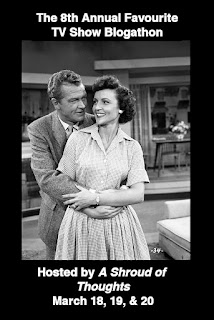
The self-imposed challenge continues with a recommendation of one movie from TCM's October lineup. A word about that line-up, it's a dandy!
The 1949 release The Set-Up is my litmus test for film critics. If it is anywhere on any of their “tops” lists, they pass muster. Local Toronto cable critics called it “an interesting little noir” upon its release in a Film Noir DVD set. Recently, a print critic for the Toronto Sun called The Set-Up a “second-tier boxing picture”.
I approve of labels. They are a fine shorthand for the basis of understanding. However, someone who thinks they know all there is to know about film-noir may be disappointed at not finding a femme fatale in The Set-Up. Someone may read “boxing picture” and think to themselves, “I have seen Rocky.” A label is like a 10 second sound byte on the evening news. It hardly tells the whole story. The most important thing to note about The Set-Up is that it is a fine movie.
The Set-Up is based on the epic poem of the same name by Joseph Moncure March. The poem published in 1928, and set in that tumultuous decade, details the story of Pansy, a black boxer with all the odds against him. Doomed not to reach the top because of jealousy and racism, he becomes a pawn of crooked gamblers after a prison term.
The movie screenplay by Art Cohn has the contemporary setting of 1949 and our lead character Stoker Thomson is a white boxer, unable to accept that he is nearing the end of his career. True to his own personal code he fails to see the duplicity that surrounds him.
It is fitting that director Robert Wise chose to film the story in real-time. He used his editor’s eye like a poet, choosing the perfect moments to put across the gritty and dramatic story.

Audrey Totter, Robert Ryan
Prior to directing The Body Snatcher, his first feature film on his own, Wise attended acting classes to better understand the mindset and expectations of actors. The Set-Up provides viewers with a wonderful example of great ensemble performances. All the performers work together to create a cohesive sense of story, yet all get to shine individually.
Journeyman boxer Stoker Thompson is holding on to a way of life he understands, while his wife Julie played by Audrey Totter wants a way out of what she sees as a dead-end street. On the night we meet them, Julie must decide if the way out will be for both of them or only for herself. Her dilemma is heartbreaking.

George Tobias, Edwin Max
At the arena are others whose decisions will impact Stoker. His manager and trainer, played by George Tobias and Percy Helton have made a deal with gangsters for Stoker to throw the evening’s fight. They haven’t let Stoker in on the deal because they don’t expect him to win. Stoker always fights to win and Alan Baxter as the sadistic gangster "Little Boy" is not a man to cross.

David Clarke, Darryl Hickman, James Edwards
We get to know and understand Stoker's co-workers including the punch-drunk "Gunboat" beautifully played by David Clarke, the anxious rookie Shanley played by Darryl Hickman, the sympathetic trainer Gus played by Wallace Ford, and the proud and ambitious Luther played by James Edwards.
Ryan was a boxer at Dartmouth College and Baylor attended Washington State on an athletic scholarship. His pro boxing record was 15-8. The choreographed match in The Set-Up is a thing of authentic grit and beauty.

Fight fans
The crowd is a major part of the story as presented by Robert Wise. They are the reason the fights go on, the bums in the seats, the profit. They are no part of what goes on behind the ropes, the individual boxer's fight with himself.

Julie - alone
The loneliness in the crowded arena is matched by the loneliness of Julie's wait for another night, another fight to finish. We stroll with her through town, returning to yet another nondescript hotel room as she struggles with the most important decision of her life.

Stoker - alone
The arena deserted after the fight where Stoker's victory places him in danger. The danger and the fear are uncomfortably palpable.
In 73 minutes, we live a lifetime with the myriad characters of The Set-Up. The setting is a boxing arena, yet we all face the same problems with the decisions we make versus the decisions that are made for us. The Set-Up is a movie of heightened emotions; uncertainty, fear, excitement, elation, despair, deceit, greed, ambition, hope, hurt, love.































